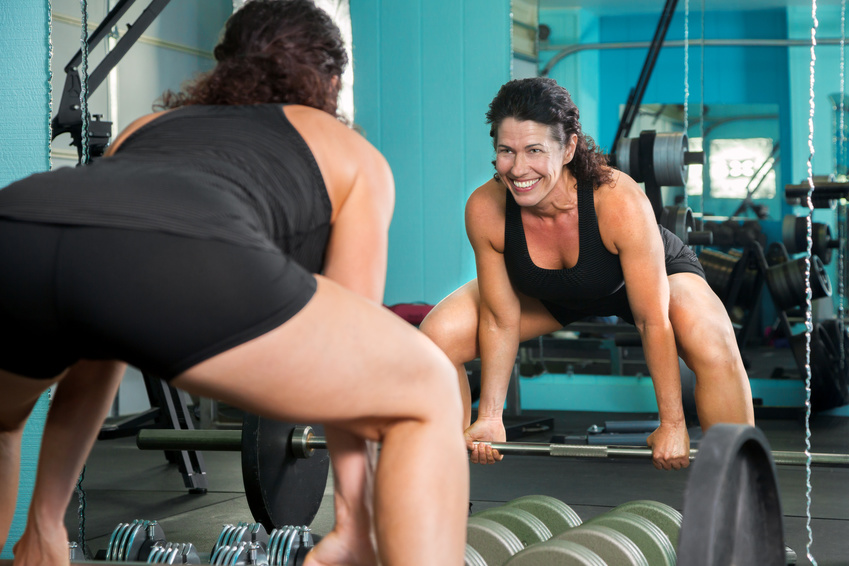Do you get pain in your low back during or after your lifting routine? Do back squats and deadlifts bring on that pain? Ever wake up with an achy back the next morning after training? Here are a couple tips for you in order to modify your routine to decrease your low back pain and prevent further injury.
Back Squat Modification
Box squat
A common error seen in back squats, at the bottom portion of the squat the hips can rotate posterior and the tailbone tucks under the body. This is called a “pelvis wink” and looks like this:
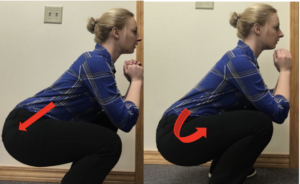
This “pelvis wink” can cause increased stress in the low back at the most loaded portion of the squat and can be a potential cause of low back pain. To modify back squats in order to avoid this faulty movement pattern is to figure out at what point your squat depth brings on the achiness in the back and set up a box or weight bench to block your motion from going beyond that point. This will prevent the increased stress on the low back. You can do this with a barbell or a kettlebell.
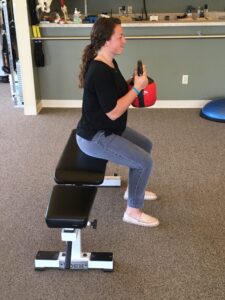
Deadlift Modifications
Do you have pain at the bottom portion of lowering or lifting the deadlift? Here are a couple variations to try with the deadlift to decrease the pain in your low back.
#1: Elevated deadlift
Try performing the deadlift with a slightly elevated floor. This allows you to decrease the load at the lowest portion of the deadlift and can decrease your low back pain with this lift.
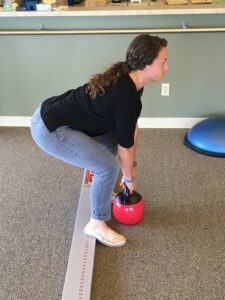
#2 Sumo deadlift
Another way to decrease the distance from your end range portion of the deadlift is to widen your foot stance. This is called a sumo deadlift. This makes the deadlift more glute dominant to decrease stress on the low back and allows you to decrease the range in lowering and raising the weight. To further emphasize glute strengthening, have the feet turned slightly out in this wide stance.
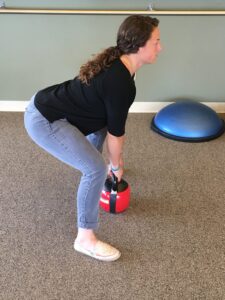
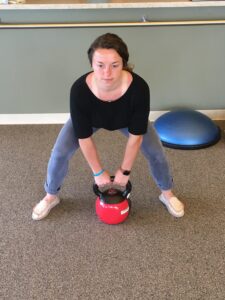
Accessory Work
Another important component in looking at your lifting routine is to be sure to add accessory work that helps you stay strong and address any weaknesses to prevent injury. Oftentimes with low back pain, especially one-sided low back pain, there can be an inhibition of your gluteus muscles on one side. This means that on this the side the glutes are weaker than the other side. This can make you more prone to injury and hip or knee pain. The best way to address this is to incorporate unilateral leg strengthening. This means that when you are strengthening one leg at a time the dominant or stronger leg can’t compensate for the weaker one.
#1 Single leg deadlift
This one is an excellent one to address that gluteus weakness and is all around a great accessory exercise. I often have people start with a foam roller at first to get the motion down well with good form. Then you can progress by using a kettlebell or dumbbell. The key is to try to keep the arch of your foot from collapsing down onto the floor, keeping the knee from collapsing inward and toes pointed slightly out.
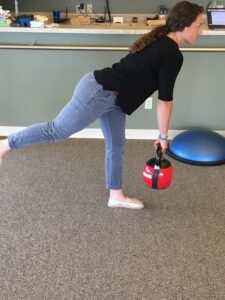
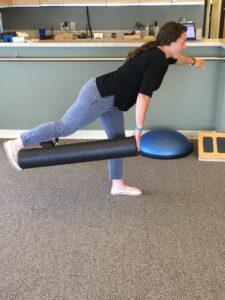
#2 Split squat
This exercise is also great for isolating the glutes on one side of the body at a time. The key is to not let the forward leg’s knee pass over the toes or to let the forward knee collapse inward. To get better glute activation, rotate the forward stance leg slightly outward.
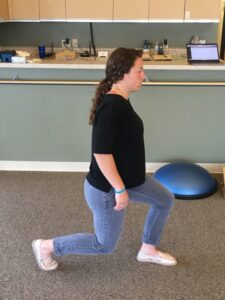
#3 Single leg sit-to-stand
This one is a great way to target both glutes and quads without allowing for compensation of the dominant side. The key is again with this one to keep the knee from collapsing inward. To increase difficulty: you can add weight by holding a dumbbell or kettlebell or do it from a lower surface.
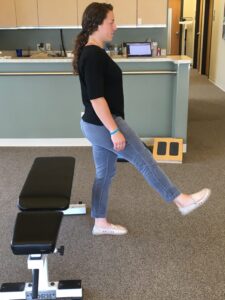
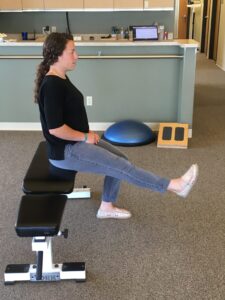
Try adding some of these modifications and accessory work to your workout. If you still have LBP with these modifications, you may need to see a physical therapist. We can help you get back on track and get you back to your lifting routine!

